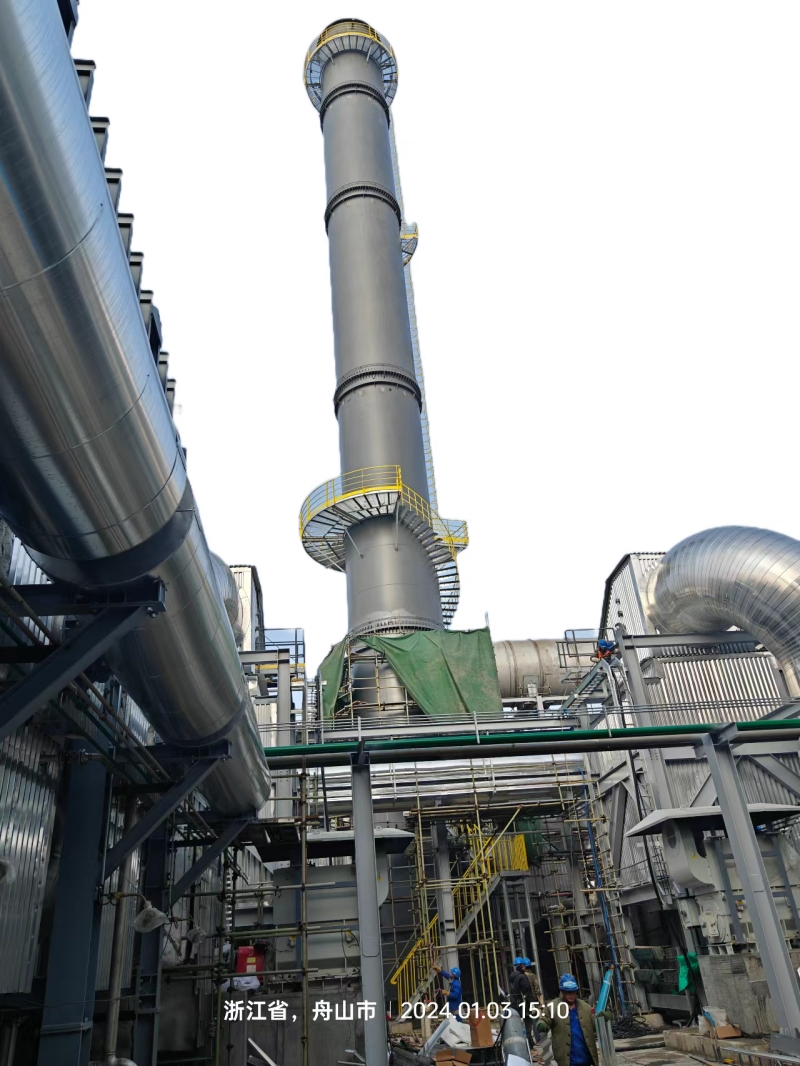
 English
English  Español
Español Português
Português русский
русский Français
Français 日本語
日本語 Deutsch
Deutsch tiếng Việt
tiếng Việt Italiano
Italiano Nederlands
Nederlands ภาษาไทย
ภาษาไทย Polski
Polski 한국어
한국어 Svenska
Svenska magyar
magyar Malay
Malay বাংলা ভাষার
বাংলা ভাষার Dansk
Dansk Suomi
Suomi हिन्दी
हिन्दी Pilipino
Pilipino Türkçe
Türkçe Gaeilge
Gaeilge العربية
العربية Indonesia
Indonesia Norsk
Norsk تمل
تمل český
český ελληνικά
ελληνικά український
український Javanese
Javanese فارسی
فارسی தமிழ்
தமிழ் తెలుగు
తెలుగు नेपाली
नेपाली Burmese
Burmese български
български ລາວ
ລາວ Latine
Latine Қазақша
Қазақша Euskal
Euskal Azərbaycan
Azərbaycan Slovenský jazyk
Slovenský jazyk Македонски
Македонски Lietuvos
Lietuvos Eesti Keel
Eesti Keel Română
Română Slovenski
Slovenski मराठी
मराठी Srpski језик
Srpski језик
Self-standing chimney steel chimney
2024-01-25
Self-standing steel chimneys are mostly used to vent smoke from boilers, hot and cold water heaters, diesel generators, incinerators, industrial plamet systems, air conditioning direct-fired units, and other equipment. Finished stainless steel chimneys are appropriate for built-in (wall-attached) high-rise buildings in my nation. New products were employed in equipment. It eliminates the standard stainless steel chimney's issues with on-site welding equipment, insulation, and other high-altitude operations in confined shafts. It is extensively utilized because to its light weight, corrosion resistance, strong heat insulation performance, long service life, beautiful appearance, ease of loading and unloading, and other benefits.
Self-standing steel chimney product materials
The choice of flue liner material is determined by the exhaust environment. For fuel gas boiler flue gas, kitchen oil flue gas and other flue gases with temperatures below 300°C and low corrosiveness, SUS304 stainless steel plates are generally used. Diesel generator sets and other high-temperature flue gases SUS316 stainless steel plates should be used for flue gas or highly corrosive flue gas emissions. The outer wall of the flue can be made of SUS304 stainless steel plate or galvanized steel plate. The outer wall of the outdoor flue should be made of SUS304 stainless steel plate.
The thermal insulation material is made of aluminum silicate filling combined with high-temperature-resistant foaming materials, and the equipment site connections are made of aluminum silicate fiber felt. The thickness of the insulation layer is generally based on different exhaust medium temperatures, and insulation materials with thicknesses of 50mm, 75mm, and 100mm are selected. For details, please refer to the "Flue Outer Wall Temperature Gauge".
Product characteristics of self-standing steel chimneys
1. The product is safe and dependable, with high temperature resistance, corrosion resistance, and excellent heat insulation capabilities.
2. Advanced technology, reasonable structure, steady process, and consistent quality; extended service life (estimated value 50 years) and no need for maintenance during normal operations.
3. It is lightweight, has a scientific and acceptable bracket combination, and is simple and easy to use on-site; it may save labor intensity and equipment expenses during big variations.
4. Equipment convenience: The tough and complicated process of manufacturing equipment in a narrow shaft at high altitude is simplified to workshop production, integrated molding, and transportation to the assembly location. This simplifies equipment processes while also ensuring that the inner liner, insulating layer, and exterior shell Production quality difficulties exist in a variety of areas. At the same time, it becomes much easier to combine equipment on-site.
5. The appearance is lovely and generous, and it may be utilized as a wall-mounted chimney to accent the building's exterior.
6. It has good functionality and is an improved version of brick, cement, and carbon steel plate chimneys.
Self-standing steel chimney installation process
1. High-quality steel is used for the installation of steel chimneys: the thickness of the steel plate is 16mm, the length is 20m, and it is processed by a plate rolling machine into a cylindrical shape with a diameter of 1.4m. Then all seams are welded internally and externally. When welding, welding slurry should be used Full, no holes, smooth and flat surface.
2. The bottom flange of the steel chimney is made of a plate with a thickness of 20mm and a hole diameter of 28mm. It is connected to the ground foundation with bolts of ¢26mm×100mm.
3. Weld three equally spaced fixed points on the steel chimney 5m to 20m from bottom to top, so that the wind cables can be connected and fixed to the anchor points on the ground.
4. Pour a chimney foundation with a diameter of 2m and a depth (thickness) of 2.3m on the ground using commercial concrete.
5. The chimney foundation steel structure uses ¢16㎜ rebar, the rebar density is 24, and the upper and lower connections use ¢12mm rebar for binding.
6. The bolts for fixing the foundation and the steel chimney are respectively embedded in the reinforced concrete foundation, and the distance is reasonably and evenly distributed.
7. When the steel chimney is installed using a truck-type crane, the chimney barrel is connected to the foundation screws by using double nuts. When lifting to the corresponding position, pull up the wind cable to connect it to the ground anchor, and the angle between the wind cable and the ground should not be greater than 60°.
8. After the overall welding and hoisting installation of the steel chimney is completed, the inner and outer cylinders of the chimney should be fully painted for anti-corrosion. When painting, the surface of the chimney wall must be treated, all weld slag and impurities must be cleaned, and the paint should be evenly painted to keep the chimney clean. The body surface is flat and smooth, and the color is bright.
9. The relationship between the diameter of the self-standing chimney and the height of the corresponding position should be determined after calculation according to the strength and deformation requirements. The diameter of the lower part of the chimney should be met, and other tension damping and measures should be taken.
10. The local stability of the chimney under the action of bending moments and axial forces should be evaluated using bending moments, horizontal seismic effects, and related axial pressure effects. (Stainless steel chimney)
11. Calculate the axial stability coefficient and total stability of the chimney welding tube section based on the cantilever structure.
The thickness of the insulation layer must be estimated using temperature calculations, and the minimum thickness is greater than 50. A fully radiant furnace type chimney's insulating layer must be at least 75 mm thick.
12. When the temperature of the chimney smoke surpasses 560 degrees, stainless steel (1Cr18Ni9Ti) can be used as uranium fasteners for the heat insulation layer.
13. When the critical wind force of the chimney is less than 6m/s, the wind breaking circle must be established. The chimney's critical wind speed ranges from 7 to 12 meters per second, which is lower than the design wind force. If changing the chimney's distance, diameter, and thickness is not cost effective, the wind breaking circle can be set instead.




